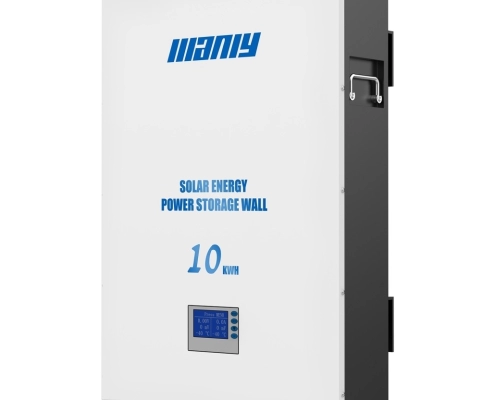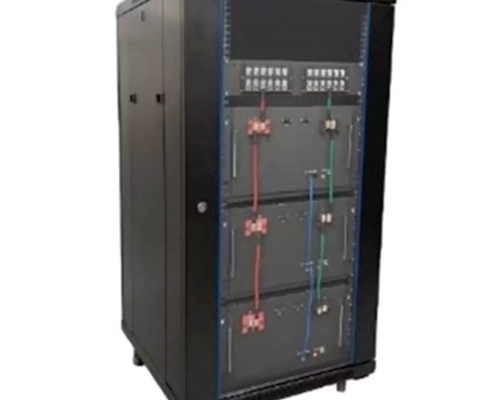Tag Archive for: Solar Battery
Are Solar Batteries Worth It?
Absolutely! Choosing a solar battery for your home is often a wise decision when the money you save is more than the cost of the battery. Think of a solar battery as an investment. While it might add around $10,000 to your solar setup, it pays off through various benefits. Here are some ways solar batteries shine:
- Beat High Prices: Dodge the peak electricity rates with a time-of-use tariff, where costs fluctuate throughout the day.
- Lower Energy Bills: Cut down on how much power you pull from the grid, especially if your bill includes demand charges.
- Reliable Backup: Solar panels vary in output, but a charged battery ensures your lights stay on during power outages or cloudy days.
Why Solar Batteries Are Helpful
Using a solar battery is particularly beneficial if your local power supplier doesn’t support net metering. This means, instead of getting credits for extra solar energy you send back to the grid, you can store it in your battery for later use. It’s a smart move financially, provided the battery costs less than what you’d typically pay for grid power at night.
Also, don’t forget about the 30% federal tax credit, which isn’t just for solar panels! It’s available for home batteries too. Combining this with other local incentives means the return on your solar battery investment gets even better.
How Long Do Solar Batteries Last?
1. Frequency of Usage for Your Solar Batteries
You might notice how your phone or laptop battery doesn’t last as long after a few years. A battery that used to last 12 hours may only last three now. This drop happens to all batteries over time. The more you use and recharge your battery, the shorter its life becomes. Eventually, batteries can’t store or release enough power to be useful.
The lifespan of batteries varies a lot. It’s not about how many years they’ve been around but how often you use them. For instance, if you’re off the grid and use your battery every night, it will wear out faster than if you’re connected to the grid and only use the battery during power outages.
To extend the life of your batteries, keep an eye on the Depth of Discharge (DoD) recommended by the manufacturer. DoD is how much of the battery’s power you use. For example, if you use 10 kWh of a 13.5 kWh battery, the DoD is 74%. Staying within the advised DoD helps your battery last longer.
2. Choosing Your Type of Solar Battery Installation
When it comes to solar storage, you’ve got three main types of batteries: lead-acid, lithium-ion, and saltwater. Lithium-ion stands out as the longest-lasting and often has the best ability to hold power. They’re not the cheapest, but their longer life and high Depth of Discharge (DoD) rate, usually up to 80%, mean you get more use from your stored energy and they might save you money over time.
Lead-acid batteries have been popular for a long time, especially for those living off-grid. They cost less and can store a decent amount of power. However, they don’t last as many charge cycles and have a lower DoD rate, between 30% and 50%. So, while they’re cheaper at first, you might end up replacing them more often.
Saltwater batteries are the new players. They’re safe and environmentally friendly, using salt to hold and release energy. They tend to outlast lead-acid batteries but don’t quite reach the lifespan of lithium-ion batteries. Like lithium-ion, they also have a high DoD rate.
Also, when choosing your solar battery, look at the warranty. Many manufacturers promise their batteries will last a certain number of cycles or years. This warranty means you might not have to pay if the battery doesn’t perform as expected.
3. Storage Conditions for Your Batteries
Batteries don’t like being too hot or too cold. It’s best to keep them in a place like a garage or basement where it’s not too hot or cold. This helps them last longer than if they were outside in tough weather.
When it’s really hot, batteries work harder, and this can make them wear out faster. When it’s freezing, the power inside the battery moves slower, and it won’t last as long as it should. Keeping your battery in a place that’s not too hot or cold helps it work better and last longer.
Lead-acid batteries are pretty sensitive to temperature changes. Most of the time, they do best when kept between 40°F and 80°F. Lithium-ion batteries are a bit tougher. They can handle being a bit below 0°F and up to 140°F, but it’s still better to keep them somewhere that’s not too extreme.
Saltwater batteries also like milder temperatures, best between 23°F and 104°F. They handle temperature changes better than lead-acid batteries but aren’t as tough as lithium-ion ones.
4. The Cycle of Charging and Using Your Batteries
To figure out how long your solar battery might last, think about how many times it can be used up and charged again. This is called a cycle. Each time you use all the power in the battery and charge it back up, that’s one cycle. The more you use your solar battery, the quicker it will go through cycles.
Using your solar battery means it will wear out over time. This happens to all batteries. They can only be charged and used so many times before they don’t work as well anymore. That’s why different batteries last for different lengths of time.
5. Care and Cleaning for Battery Longevity
Solar batteries need a bit more attention than solar panels, which are pretty low-maintenance. For lithium-ion batteries, just check how much power they have every so often. No matter what kind of battery you have, it’s important to keep them clean. Wipe off any dust or dirt and make sure the parts you connect wires to are clean too. Products like the Anker 767 Solar Generator are designed to be tough, resistant to flames, and not affected by sunlight, making them easier to look after.
Solar Batteries: How Well Do They Work?
Solar power is getting more popular because it helps save money and is good for the planet. The problem used to be that solar panels only worked during the day. Any extra energy you didn’t use went back to the power grid.
Now, with solar batteries, you can keep the power your panels make and use it later, like at night when everyone is using a lot of electricity. This way of using your own solar power is called self-consumption and it’s a great way to cut down on energy bills.
When you add a solar battery to your home, you can use much more of the solar power you make. For example, adding a 4 kWh battery to a 5 kW solar system can double how much solar energy you use, from 30% to 60%.
Having a solar battery means you rely less on the power grid and save more money, especially as the payments for giving extra power to the grid get smaller. Plus, if there’s ever a power outage, you’ll still have electricity thanks to your battery.

Selecting the Right Solar Battery
How Do you Test a Solar Battery Bank?
It’s smart to keep an eye on your solar batteries, and you can do this in a couple of ways:
The easiest method is to fully charge the batteries in your solar battery bank first. Then, use a multimeter to measure and write down the voltage of each battery. After that, disconnect them from any solar panels and let them sit for a few days. Check the voltage again after this period. If a battery’s voltage has dropped without being used, it likely has a problem, often a broken cell.
Another way is to test each battery by using it to power something, like a lightbulb or heater. Write down the battery’s voltage before you connect the load, then let it run for about 30 to 90 seconds and measure the voltage again. Compare these numbers for all the batteries. A faulty battery will show a bigger drop in voltage compared to the others.
How Much Do Solar Batteries Cost
In the United States, if you’re looking at the EnergySage marketplace, expect to spend about $10,000 to $20,000 for a typical home battery, including the installation. Prices can vary a lot based on different things.
You might be curious about the starting prices for some well-known solar batteries. For those we don’t have exact prices for, we’ve given an estimated total cost that includes installation.
| Battery Brand | Cost |
| Tesla Powerwall | $8,500 |
| Generac PWRcell | $9,999 |
| sonnen eco | $10,000 |
| LG Chem RESU | $9,500 – $13,000 with installation |
| Panasonic Evervolt | $15,000 – $20,000 with installation |
In Australia, Solar Choice keeps track of the average cost of home solar batteries using information from over 200 solar installers. Usually, these batteries cost about $1,000 to $1,300 per kWh of capacity when installed, and this can change based on the brand, size, and where you live.
Here are the latest prices we’ve got, not counting any rebates you might get from your state:
| Battery Size | Battery Only Price | Battery + Inverter/Charger |
| 3kWh | $4,200 | $4,700 |
| 8kWh | $10,000 | $11,100 |
| 13kWh | $16,300 | $17,600 |
| 18kWh | $23,900 | $25,900 |
| Battery Size | Only Battery Price |
| 5kWh Battery | $1280.91 |
| 10kWh Battery | $2547.32 |
| 15kWh Battery | $3833.6 |
| 20kWh Battery | $5109.7 |
| 30kWh Battery | $7693.2 |
(Please note: We only supply batteries. The price of solar batteries may vary each quarter. Before placing an order for our products, please contact us.)
Best Solar Batteries
MANLY 5kWh Battery
The 5kWh battery, backed by a 10-year warranty and a range of certifications including UN38.3, IEC62133, UL, and CE, maintains stability even in the most extreme conditions. Constructed from LiFePO4 cells, it meets the highest safety requirements. Enhance its performance with a customizable smart BMS that not only monitors but also balances the cells, ensuring maximum protection. This BMS seamlessly integrates with leading inverters such as Growatt, Goode, Deye, Luxpower, and SRNE.
MANLY 10kWh Battery
Discover our 10 kWh home battery, tailored for solar energy storage solutions. This wall-mounted unit boasts a 48V and 200Ah specification, powered by superior MANLY lithium iron phosphate cells for unmatched safety and efficiency. Designed for endurance, it offers 8000+ deep cycles, assuring lasting reliability. The powerwall features a maximum 100A discharge capacity and is safeguarded by an integrated BMS. Its modular design is sleek yet sturdy, with laser welding to enhance durability. The 10kWh battery is not only easy to install but also comes with critical safety features like overvoltage and overcurrent protection, ensuring secure operation. Plus, its robust build is engineered to withstand severe impacts, mitigating risks of explosions or fires.
MANLY 15kWh Battery
The 30kWh battery, designed as a 48v 600ah rack-mounted unit, is ideal for residential energy storage. Crafted with A-grade LiFePO4 lithium iron phosphate cells, it provides top-notch safety and reliability. Its high conversion efficiency and powerful output are complemented by an impressive 95% energy ratio, significantly minimizing the product’s size and weight for economical shipping and easy installation.
Optional LCD displays keep you informed about the battery’s working status, voltage, and cycle count. This battery is compatible with major inverter brands and features an all-in-one wall-mounted design for hassle-free setup. The plug-and-play nature simplifies installation further. Plus, for expansive energy needs, you can connect up to 8 of these 30 kWh lithium battery packs in parallel, offering adaptable solutions for a variety of solar home and off-grid energy storage systems.








